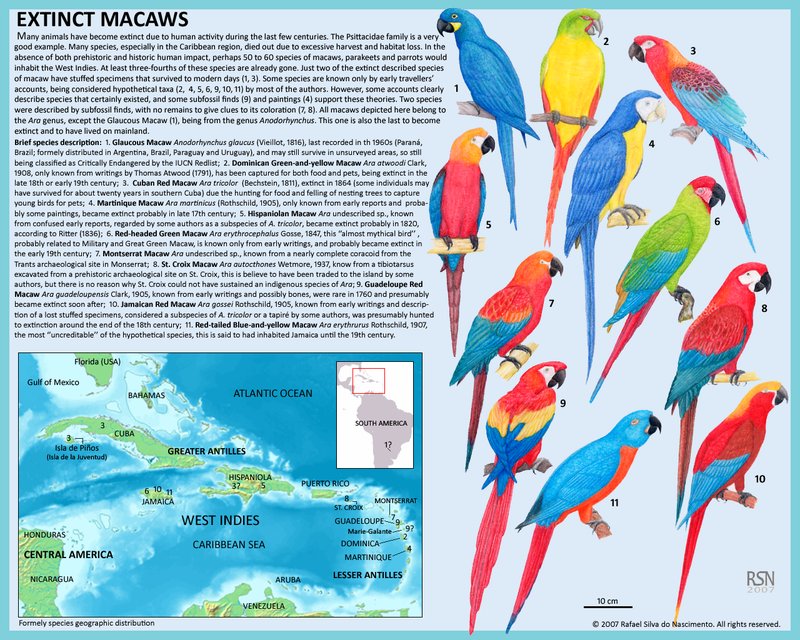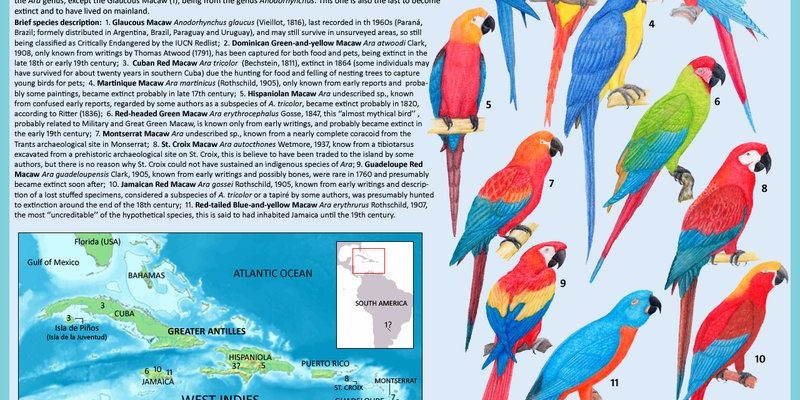
Macaws are members of the parrot family, known for their intelligence and playful nature. You might see them striking up a conversation with each other in the wild or even mimicking human speech in captivity. But have you ever wondered how they came to be so unique? Or what challenges they’ve faced throughout history? Buckle up, because we’re about to take a journey through the evolution and history of these incredible birds.
The Origins of Macaws
To understand the evolution of macaws, we need to look back millions of years. The story begins during the late Eocene epoch, around 40 million years ago, when the ancestors of today’s parrots started to emerge. These early birds were likely small, similar in size to modern finches, and were quite different from the giant macaws we see today.
As the Earth’s climate changed and forests expanded, these early birds adapted to their surroundings. Over time, they evolved into various species, including the ancestors of macaws. Paleontologists have found fossil evidence of these early parrots, indicating that their evolutionary path was influenced by factors such as habitat changes and food availability.
You might be wondering how macaws got their striking colors. Well, bright feathers serve important purposes. They attract mates and help in social interactions. So, as these birds evolved, having vibrant colors became advantageous for their survival.
The Different Species of Macaws
There’s a lot of diversity among macaws. In fact, there are about 17 species of macaws, each with its own unique traits. Some of the most well-known species include the Blue-and-yellow Macaw, the Scarlet Macaw, and the Hyacinth Macaw. Each one has its own charm and adaptations that suit its environment.
For example, the Scarlet Macaw, which sports vibrant red, yellow, and blue feathers, thrives in the tropical rainforests of Central America. Its strong beak is perfect for cracking open tough nuts and fruits. On the other hand, the Hyacinth Macaw holds the title for the largest flying parrot. With its striking cobalt blue feathers, it feeds primarily on palm nuts found in its South American habitat.
What’s fascinating is how these various species have adapted to their homes. The shapes of their beaks, their sizes, and even their social behaviors reflect the different environments where they live. This is a perfect example of how evolution works: species changing over time in response to their surroundings.
The Role of Macaws in Ecosystems
Macaws don’t just look beautiful; they play a vital role in their ecosystems too. These birds are important seed dispersers. When they eat fruits, they pass the seeds through their digestive systems and drop them in a different location. This helps in the growth of new plants and contributes to the health of the forest.
Let’s think about it this way: if you plant a garden, you want different plants to grow close together, but also need some space between them. That’s just like what macaws help do in the wild. By spreading seeds, they contribute to the diversity of plants in their habitats. The growth of these plants also means more food and shelter for other animals, creating a balanced ecosystem.
But here’s the thing—as much as macaws help their environments, they also face significant threats. Deforestation and illegal trapping for the pet trade have put many species at risk. Their decline could disrupt local ecosystems, showing just how interconnected everything is.
Macaws in Culture and History
Throughout history, macaws have made a mark on human culture. Indigenous cultures in Central and South America have revered these birds for centuries. They often appear in art, mythology, and folklore, symbolizing beauty, freedom, and connection to nature.
In ancient civilizations, like the Mayans and Aztecs, macaws were often depicted in pottery and murals. They were seen as sacred creatures, sometimes associated with gods and used in important rituals. Even today, macaws remain a powerful symbol for conservation efforts, reminding us of the beauty of nature and the importance of protecting it.
However, the relationship between humans and macaws isn’t always positive. As mentioned earlier, the demand for pet macaws has led to rampant trapping, endangering their populations. The connection between these birds and humans is complicated, filled with admiration, yet fraught with challenges.
The Conservation Efforts Behind Macaw Protection
As the threats to macaws grow, conservation efforts have sprung into action. Organizations and governments are working to protect habitats, enforce laws against illegal trapping, and create awareness about the importance of these birds. Field programs often focus on habitat restoration and the reintroduction of captive-bred macaws into the wild.
One notable initiative is the effort to save the Spix’s Macaw from extinction. Once considered extinct in the wild, dedicated conservationists have been working tirelessly to bring them back. Breeding programs and habitat restoration are key components of this plan.
Additionally, many zoos and wildlife parks are involved in breeding programs aimed at preserving various macaw species. These efforts help educate the public about the importance of conservation and foster a love for these stunning birds.
The Fascination with Macaws Today
Today, macaws continue to captivate people around the world. Whether it’s through wildlife documentaries, books, or as beloved pets, their beauty and social nature draw attention. Many bird enthusiasts are dedicated to learning more about them and helping with conservation efforts.
You might find macaws in various settings, from exotic bird shows to serene nature reserves. Each encounter can deepen our appreciation for their uniqueness. Their playful personalities and intelligence make for a wonderful connection between humans and nature.
As we look to the future, it’s essential to remember that our actions impact these incredible creatures. Supporting conservation efforts, advocating for habitat preservation, and educating others can help ensure that macaws thrive for generations to come.
The journey of macaws is a fascinating tale of evolution, adaptation, and connection with both nature and humanity. From their colorful feathers to their vital roles in ecosystems, these birds are more than just pretty faces. Their history is woven into the fabric of many cultures, and their future depends on our willingness to protect them.
As we sip our coffee and admire these magnificent creatures, let’s also think about how we can contribute to their story. Whether it’s through supporting conservation initiatives or simply spreading awareness, each small effort counts. Macaws remind us of the beauty of biodiversity and the importance of safeguarding it. So next time you see a macaw, take a moment to appreciate the rich history and evolution behind it.

